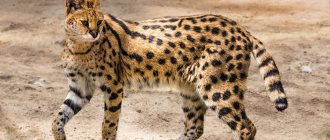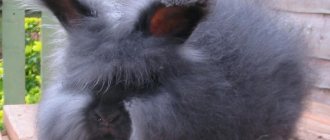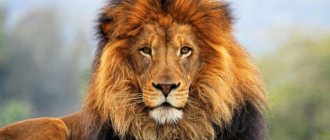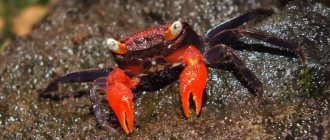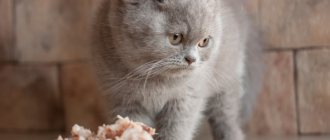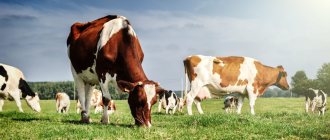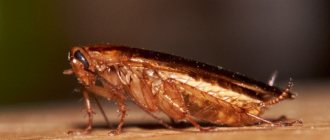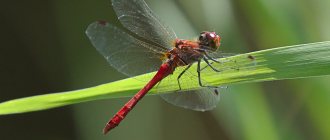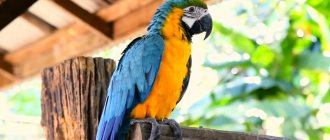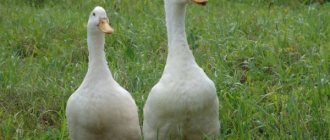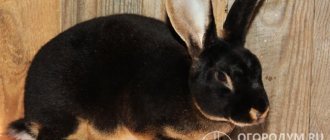Of the domestic and commercially bred animals, the most fluffy is the Angora rabbit, sometimes called the Angora lion, sometimes the lady rabbit.
Its pile is very soft. This name unites all breeds that are characterized by abundant fluffiness.
The fur rabbit originates from the capital of Turkey, Angora (now Ankara). In the 18th century, the animal came to Europe, and the furry animals were admired at the French court. In the 19th century, the Angora pet became known throughout the world. And in 1927, the Germans brought lady rabbits to our country.
Origin
Relatively little information is known about Angora downy rabbits. It is believed that the first mention of the variety was received in Turkey, where they were first purchased by sailors at the beginning of the eighteenth century. Since then, active breeding of the breed began in Europe. It is also a known fact that noble rich people and even the royal family acquired its representatives for their own pet menagerie.
In 1900, rabbits came to America, where breeders improved the breed by crossing with others. In the mid-twentieth century, two new varieties were obtained: English and French, and later the German Angora rabbit was registered. By the end of the twentieth century, three more were bred in Germany and France: dwarf, giant and satin.
In Russia today, the listed varieties of rabbits are also bred. Meanwhile, a white down breed was also bred in the USSR, the purity of whose blood they are trying to preserve to this day.
Description and characteristics of the Angora rabbit
Breeding Angora rabbits is preceded by the purchase of livestock. If the breed is intended to be bred, then it is especially important to purchase healthy animals that match the exterior.
General features of the breed:
- Rabbits of all subspecies of Angora have a shortened cylindrical body and a large head. The muzzle can be blunt or elongated depending on the breed.
- The ears are small, with fluffy tufts at the ends. The hairstyle depends on the breed, but most have long hair.
- All subspecies of rabbits have very fast claws. They are sharp and can cling tightly to the roots of trees and bushes. Because of this, rabbits' claws are cut 2 times a month.
- The fur covers the eyes, so it has to be carefully combed. Pooh should not cover your eyes.
Rules for keeping at home
Angora is a rather whimsical animal. Fluffies are shy, but quickly learn. You must speak in a calm voice and not make sudden jerky movements. Before picking up an animal, you need to let yourself be sniffed so that the smell of a person becomes familiar to it. You can reward your pet with treats.
Choosing a room and cage
The enclosure in which Angora rabbits will be kept can be located at home or outdoors.
- The outdoor enclosure is fenced using a chain-link mesh and covered from above. It must be equipped with a drinking bowl and feeder, and a compartment for hay. The enclosure may be adjacent to a barn or have houses for pets.
- The home enclosure should be fairly free (at least 2x2 meters). Bowls for water and food, a compartment for hay, a toilet, toys and bedding are placed inside. Part of the enclosure can be darkened - put a box so that the pet can climb into it.
It is necessary to ensure that the room in which the animal is located is ventilated and not damp. High humidity can cause your pet to catch a cold.
Rabbits protect their territory, do not allow contact with other pets, and place another rabbit in the cage.
Balanced diet
The diet should be varied and nutritious. A decorative rabbit should eat the following: succulent green and grain food, raw vegetables and fruits, shoots and leaves. It is not advisable to feed animals cabbage. Every day you should remove any remaining stale food and pour clean water.
Angora rabbits in production eat differently: feed, cake, cabbage and meat and bone meal.
Features of care
Caring for Angoras is not much different from caring for other varieties. There is one peculiarity - it is imperative to keep the cages clean, since long hair quickly gets dirty and tangled. It is necessary to carefully care for the fur to prevent the formation of tangles. The wool is cut at least once a month using special scissors, and less often it is plucked. Animals with not too long hair are brushed once every month or two. Angora lions and English Angoras require brushing every three days.
Care must be taken to ensure that fluff does not accumulate in the stomach, where it can enter with food. There are special drugs that dissolve fur in the stomach. Hay prevents hair from accumulating in the body.
Animals often get sick and are susceptible to intestinal diseases, so we must not forget about regular visits to the veterinarian, preferably every month. Angora rabbits are vaccinated: the first one on the 45th day, the next one after three months, and then every six months.
Breeding
Females can occur when they reach one year of age. The Angora is distinguished by its late maturation, compared to other species, the mating of which takes place already at five to six months. Males for breeding rabbits are selected at the age of six months. If an individual is rejected, its fur is cut off two or three times and sent for slaughter. After all, some breeds of Angora rabbit are bred by selecting animals with special care, trying to strengthen and improve the offspring.
The life expectancy of Angoras is about five years. With proper care, careful and proper care, a pet can live seven years or more. Females live for four years, then their productivity and reproduction rate decrease, which makes keeping them unprofitable.
Pregnant rabbits need to be carefully looked after: monitor the temperature and humidity in the room so that there are no changes. Up to eight cubs are born, which by four months gain one and a half kilograms in weight. Adult rabbits weigh from two to six kilograms. A third of the individuals are used for breeding, and the rest for fur collection.
Angora rabbits are wonderful animals, loved for their cute appearance and soft fur. Their content is not difficult. The main thing is to carefully choose a healthy pet when purchasing and provide it with good conditions.
Care
To ensure that the animal is always in perfect condition, it must be looked after. This will require some effort from the owner. The giant Angora rabbit loves to be groomed constantly. This should be done once a week. At the same time, animals do not really like moisture. Therefore, to prevent the wool from becoming dirty, it should be washed with special solutions that can be bought at a veterinary pharmacy.
Haircuts can be done once every two weeks. You can blow the wool with a hairdryer. This will help remove dead hair. For care, use scissors, slicker brushes or metal combs.
It is also important to pay attention not only to the animal itself, but also to the place where it lives. The rabbit loves to live outdoors. But at home it is possible to keep him in a cage. There he will breed his rabbits.
The cage must be washed regularly and any remaining food or waste products removed from it. If this is not done, the animal may catch an infection and get sick, as they are prone to this and can easily catch various infections. Treatment can be difficult and lengthy, as well as expensive.
Feeding
Rules and principles of feeding:
- The main food is concentrated feed mixtures, hay, vegetables. It is also fashionable to give crackers and dairy products. Every day, the diet should include seasonal fruits, greens, and juicy root vegetables.
- Rabbits need to be fed on time, otherwise they will chew inedible objects.
- Greens are given only in a limp form; they should lie down for a while. Rabbits happily eat alfalfa, reed, and hogweed.
- Along with the food, animals can receive vitamin and mineral supplements.
- Do not give moldy bread to rabbits.
- At the feeding site there should always be a drinking bowl of a special design so that the rabbit cannot contaminate it with food or its own feces.
Food bowls should be ceramic to prevent the rabbit from chewing them.
Feeding
In the place where the Angora rabbit lives, there should always be a container of water. The drinking bowl should be kept clean and the water there constantly changed, as rabbits can sometimes leave their feces there. To avoid this, you can purchase a special drinking bowl. There you can keep the liquid in a clean state longer.
Animals should be given cabbage and other vegetables. They can also eat dairy products. Crackers are considered a delicacy. You can make them yourself from bread. It is worth remembering that it is forbidden to give moldy bread to rabbits.
Angora rabbit breeds
Angora rabbit is a common name for several varieties of animals with soft and delicate fur. The following breeds are distinguished:
- English. The smallest and fluffiest of all, the English rabbit looks like a large and soft ball. You can find a rabbit of any color: white or cream, chocolate and even black. Fur grows absolutely everywhere.
- French. Produced on an industrial scale. The fur is easy to comb out and is not found on the ears, face or front legs.
- Germanic. Large for the Angora breed, female rabbits and rabbits are exclusively white. Like the previous variety, the Germanic breed is often used in industry.
- Gigantic. They differ from other breeds in eye color: representatives of the giant breed have blue or red eyes. The color of the coat is white, there are small tassels on the ears.
- Downy. Developed by Russian scientists. A down breed rabbit can be either white or other colors. The main advantage of the breed: downy rabbits are adapted to Russian weather conditions.
| Breed name | Weight | Amount of fluff (per year) |
| English | 2.6-2.8 kg | 450 g |
| French | 3 kg | 550 g |
| German | 4-5 kg | 1.5 kg |
| Gigantic | 4-5 kg | 1.2 kg |
| Downy | 2.6-4.6 kg | 500 g |
Productivity of breeds
Downy Angora rabbits of all varieties are capable of producing up to one and a half kilograms of pure fluff per year. At the same time, animals reach a weight of up to six kilograms, which allows slaughtering to produce not only high-quality fur for production, but also tasty, healthy meat that is perfectly absorbed by the body.
Rabbits are distinguished by their high precocity. So, by the age of four months their weight reaches two kilograms. The simplicity of maintenance is explained by its kind and peaceful disposition.
Health
These animals are considered to be long-livers. They have good health, which is due to genetics. Angoras do not suffer from hereditary diseases. They have high immune defense.
At the same time, cats are prone to the appearance of parasites in their bodies. They are often infected with helminths (fluke). Treatment for parasites is required.
Animals are susceptible to feline distemper or panleukopenia. Young and adult cats are prone to the disease. The mortality rate among them due to pathology reaches 90%. It is recommended to vaccinate Angora cats against panleukopenia from an early age.
Pets also suffer from rhinotracheitis. The virus affects the respiratory system and eyes of cats. Preventive vaccinations against infection are given starting from the third month of a kitten’s life.
Calicivirus is common. Those under 2 years of age are vulnerable to the disease. The mortality rate from calicivirus among them reaches 80%. Vaccination against infection is required, which is carried out along with vaccinations against rhinotracheitis and panleukopenia.
Those who have contact with others with sick relatives become infected with rabies. An Angora cat can catch an infection on the street if it eats a sick rodent. The disease leads to death. To prevent infection with rabies, the animal is vaccinated starting from the 3rd month of life.
Representatives of the breed are characterized by several specific diseases. Many are prone to ataxia. With pathology, the animal's coordination of movements is impaired. The disease leads to paralysis.
Angoras face hypertrophic cardiomyopathy. Overly active cats experience sudden bouts of shortness of breath. This occurs mainly in young animals 2 years of age. Hypertrophic cardiomyopathy is also observed in older animals. The risk of developing pathology remains within the first 5 years of life. The disease is rare and is genetic in nature.
White Turkish Angoras are likely to give birth to deaf kittens. Some representatives have disadvantages:
- strabismus;
- deformation in the tail area;
- roughness of features;
- presence of water-repellent undercoat.
These defects are undesirable and indicate flaws within the breed itself.
Cats live 12 years. Many reach the milestone of 15 years. With high-quality and annual vaccinations and proper care, the animal lives 20 years.
Pros and cons of the breed
The undeniable advantages of Angoras are their beautiful appearance, the ability to use the animal as a pet, as well as a high gross fur yield. Animals are often shown at various agricultural festivals, fairs and exhibitions. Also, the Angora breed has several main disadvantages:
- the animals are small, they only seem big because of their fluffy fur;
- Rabbits weigh little, so their production for the sake of obtaining clean meat is often unprofitable and unjustified;
- Despite the large amount of wool, no more than 1.5 kilograms of fluff can be collected per year.
- Rabbits require constant care and often get sick.
If we talk about the pros and cons of an animal as a pet, the rabbit is quiet, it makes a minimal amount of sounds, and almost does not scratch.
Unfortunately, there are some downsides: animals can chew wallpaper and wires, and bite your heels. They also mark corners and things of the owner (can be corrected by castration), and leave waste products in inappropriate places. However, many problems can be solved by purchasing a cage for your pet.
Exterior Features
Recently, many artificial materials have been invented that can successfully replace natural wool. Therefore, today farms mainly breed only meat rabbits. But sometimes in farmsteads you can, of course, meet Angora animals. These breeds are especially popular in China. In this country, downy rabbits are simply bred in huge quantities. Also, Angora animals are often kept in families simply as pets.
The main feature of rabbits of this variety is, of course, very long fur, 90% consisting of downy hair. The wool of such animals produces very high-quality, soft and warm yarn. Angora rabbits do not grow too big. The weight of adults can range from 2-4 kg depending on the breed. But up to 1 kg of fluff per year can be collected from each such animal.
The fur color of Angora rabbits (the photos on the page confirm this) can be very different. Animals of this variety are bred on farms: black, white, cream, etc. The body of such rabbits of most breeds is short, and the bones are thin. Therefore, in appearance, animals usually somewhat resemble a small fluffy ball.
Breeding
It is recommended to purchase rabbits for breeding and restocking only from specialized farms. It is best to buy them at the age of three months. In them, the cost of an adult animal will be about two thousand rubles.
Female rabbits reach sexual maturity at nine months. Theoretically, they can be mated earlier, but it is at this age that they gain enough energy and mass. The most convenient period for mating is considered to be the period from January to August. A week before giving birth, the female rabbits become more nervous and aggressive and begin to prepare the nest. In this case, it is recommended to transfer them to a cage with a queen cell with soft bedding. In one litter, the animal is capable of producing up to six to eight cubs. Each year it is possible to produce one or two litters of young animals.
Tips for choosing a rabbit
Every owner who decides to buy an Angora rabbit must adhere to the following rules:
- Think carefully about your purchasing decision. Caring for a rabbit is a complex and important process. The owner must pay sufficient attention to his pet.
- The rabbit should be purchased from a nursery or a special market. It is difficult to find a healthy pet in pet stores. Never pick up a rabbit from your hands.
- Before purchasing, hold the rabbit in your arms and look at its behavior. Angoras are usually very active animals. If he appears passive, there may be something wrong with the rabbit.
- Check the quality of your pet's fur. Carefully inspect the animal for parasites. Look into his eyes: if they are clouded, there is a high probability that the animal is sick. The eyes should be clean and shiny.
- If you have two pets of different sexes, and you do not want to breed offspring and give birth to a female rabbit, contact a veterinary clinic and have the animals spayed and neutered.
- Do not rely on price when choosing a rabbit. Check the fur, cleanliness of the eyes, and activity of the animal. Even for a lot of money they can sell you a sick animal, whereas in a nursery you can choose a budget but healthy option.
Angora rabbits are suitable not only for breeding on farms for wool production, but also as pets. Don’t forget to examine your rabbit, take proper care of it, and your pet will live a long and happy life.
Diseases
Visit your veterinarian regularly and get vaccinated. The first vaccination is given at the age of 45 days, the second after 3 months, subsequent ones every six months. Individuals over 5 years of age are especially susceptible to digestive disorders and intestinal diseases.
While walking, make sure that the fluffy does not chew everything, otherwise he can easily injure himself. He must always be active and have sparkling eyes. Rarely sits quietly in his arms, constantly trying to break free. If your rabbit becomes too lethargic, this may be a sign of illness. For decorative individuals, haircuts are carried out as a preventive measure.
Is it possible to have a fluffy rabbit in a family with children?
The Angora animal is very loved in the world, especially in Europe, not only for its beauty, but also for its friendliness and complaisance. The animal is distinguished by intelligence and intelligence, there is no aggressiveness in them, they strive for warmth and appreciate when they are treated with care. For a family that even has small children, the animal is not dangerous, but only useful.
To train your pet, you should not use a raised tone of voice or sudden movements; goals are achieved with affection and calm speech. Before you pet the Angora rabbit, you need to offer your hands to him so that he sniffs and overcomes his cowardice. The animal gets used to the owner, having mastered his smell. Any angora is playful, funny, and jumps a lot. When a rabbit makes progress, it needs tasty rewards.
Angora animals can be directly used even at home to produce yarn. The eared animal is held horizontally by one assistant, the second receives yarn from the animal.
